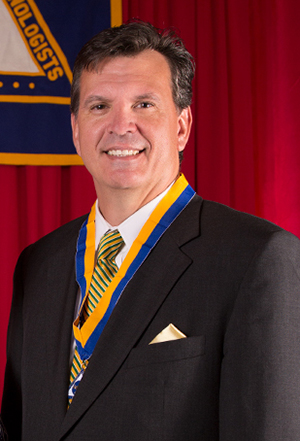Nov. 29, 2016
 As an experienced researcher and the new chairman of the ASRT Foundation Research and Grants Advisory Panel, I want to share a few pieces of advice with potential research grant applicants to help them get started in the process.
As an experienced researcher and the new chairman of the ASRT Foundation Research and Grants Advisory Panel, I want to share a few pieces of advice with potential research grant applicants to help them get started in the process.
So you have an idea for a research project — great! You’re already on the right track. Your first step is to review the ASRT Foundation’s Research Agenda. The agenda is a wish list of sorts designed to help potential applicants understand whether their project aligns with the Foundation’s goal of supporting research that maximizes health care efficiency and effectiveness. If, after reviewing the agenda, you believe your research falls under the scope of the Foundation’s support, the next step is to submit a letter of intent.
Think of your letter of intent as your introduction to the Panel. This is your opportunity to wow the reviewers with the merits and significance of the research you’d like to conduct. On the Panel, we love nothing more than to be ‘wowed’ by a strong letter of intent that makes us want to read more!
How do you go about creating a strong letter of intent? Keep it to one page. This is not a full proposal, just a brief outline of your research for the chairman and vice chairman of the Panel to review and provide feedback. It should briefly summarize how your potential research project aligns with the Foundation’s mission and provide some specifics on the research itself.
A strong letter of intent includes four major sections:
First, make it easy for the Panel to contact you by including your name, address, telephone number, fax number and email address, as well as the same information for the facility through which you will be conducting the research.
Second, you’ll need a statement about how the proposed project supports the Foundation’s mission. Your statement should summarize, in three to five sentences, how your research will help the Foundation support and empower medical imaging and radiation therapy professionals and students as they pursue opportunities to enhance the quality and safety of patient care. Tell us how your research will impact the R.T. community and what it could mean to the profession.
Third, you’ll need to state, in three to five sentences, the problem you want to investigate. This statement should give the Panel members a brief background on the issue and its effect on the profession.
Finally, describe your specific aims, research method, time frame and budget. Your specific aims should give the Panel a summary of your objectives for conducting this research. What questions are you trying to answer? Do you have any hypotheses you are trying to prove or disprove? This is where you tell us what you hope to discover through your research. Your methods section should explain how you plan to achieve the specific aims you’ve laid out. You’ll also need to provide an estimate on how much time and funding you’ll need to complete your research. This information enables the Panel chairman and vice chairman to evaluate the merits of your proposed research.
If your project aligns with the Foundation’s mission, you may receive an invitation to submit a full proposal and perhaps even feedback on how to strengthen the project. If the project doesn’t align with the Foundation’s mission, you will not be invited to submit a full proposal.
Following these simple steps will help ensure that your letter of intent is a strong one. The Panel’s goal is to recommend the funding of well-crafted, quality research projects. With limited resources, we want to be certain that exemplary research is conducted and that we are good stewards of the monies donated by Foundation supporters.
For more information on submitting a full proposal, as well as deadlines for submitting a letter of intent, visit the Research Grants page.